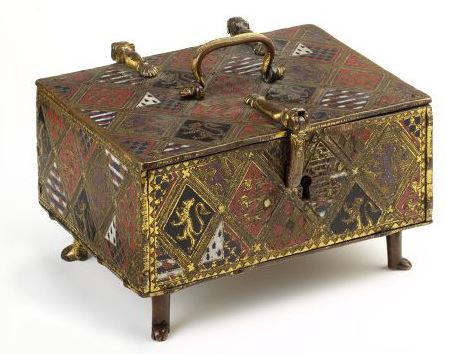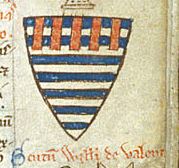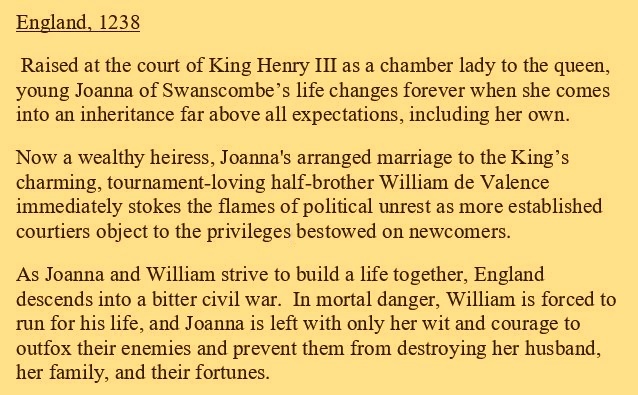For around two years my readers have been following the progress of my novel set in the 13th century on Joanna and William de Valence. The daily updates have been headed “Joanna de Valence” and before the butterfly of the final title emerged from its chrysalis, it had two working titles in its caterpillar life when being discussed with my agent and editor.
The first working title in the early days was “The Marriage Casket” based on a lovely little casket in the V&A museum that had been commissioned by one of the de Valence family and my first draft wore this name in the document header. It wasn’t quite right, but the novel was about a marriage and the casket had connections with the family.
A couple of months later, title two arrived – ‘The Painted Chamber’ because several scenes were set in King Henry III’s great painted chamber at Westminster and there was plenty of symbolism in the chamber that pertained to the state of Joanna and William’s marriage and to what was happening in the nation. Above one door, Henry had ordered a mottoe to be painted “ke ne dune, ke ne tine, ne prent ke desire’ – ‘he who has and does not give, will not, when he wants, receive.’ ‘The Painted Chamber’ It was a better fit than ‘The Marriage Casket’ but still distant and still about an object rather than the people. King Henry’s Painted Chamber no longer exists, destroyed by fire in the 19th century, but we have some images and watercolours that were recorded shortly before its demise, including some figures, that were an inspiration for me while writing the novel.
While working through the proofs, I had a thought inspired by seeing a different version of William de Valence’s shield. Initial research had led me to the de Valence blazon of blue and white stripes, surrounded by read martelets (swifts). In heraldic terms “Barry of argent and azure an orle of martlets gules.” But it turns out that William de Valence had an earlier device, depicted in Matthew Paris’s Chronica Majora of the mid 13th century. This time the blue and white striped background, the ‘barry of argent and azure’ is overlaid at the top with a red bar known as a label of five points of England. You can’t see it well on Paris’s illustration but the 5 red vertical strips each feature 3 golden lions i.e. the lions of England. William de Valence was one of King Henry III’s 5 half-brothers, and this device reflects that royal connection. The family motto of the Lusignan half-brothers was “Who fears death less than lions?”
Joanna, the female lead in the novel was a granddaughter of the great William Marshal, Regent of England in the early part of Henry III’s minority from 1216 to 1219 when William died. The Marshal blazon was a scarlet lion on a green and gold background.
With lions on both sides, and with Joanna and William’s marriage being one of the causes of courtly and political upheaval in the reign of Henry III, what better title could there be for the novel than…
A MARRIAGE OF LIONS
The title keys into heraldic devices in the family. It bring the marriage to the forefront in the title and the word ‘lions’ adds strength to the softer word ‘marriage.’ I feel it’s a terrific fit and worth the wait for my subconscious to work it out!
The jacket will be coming later, but we do have the short background whetter below.



